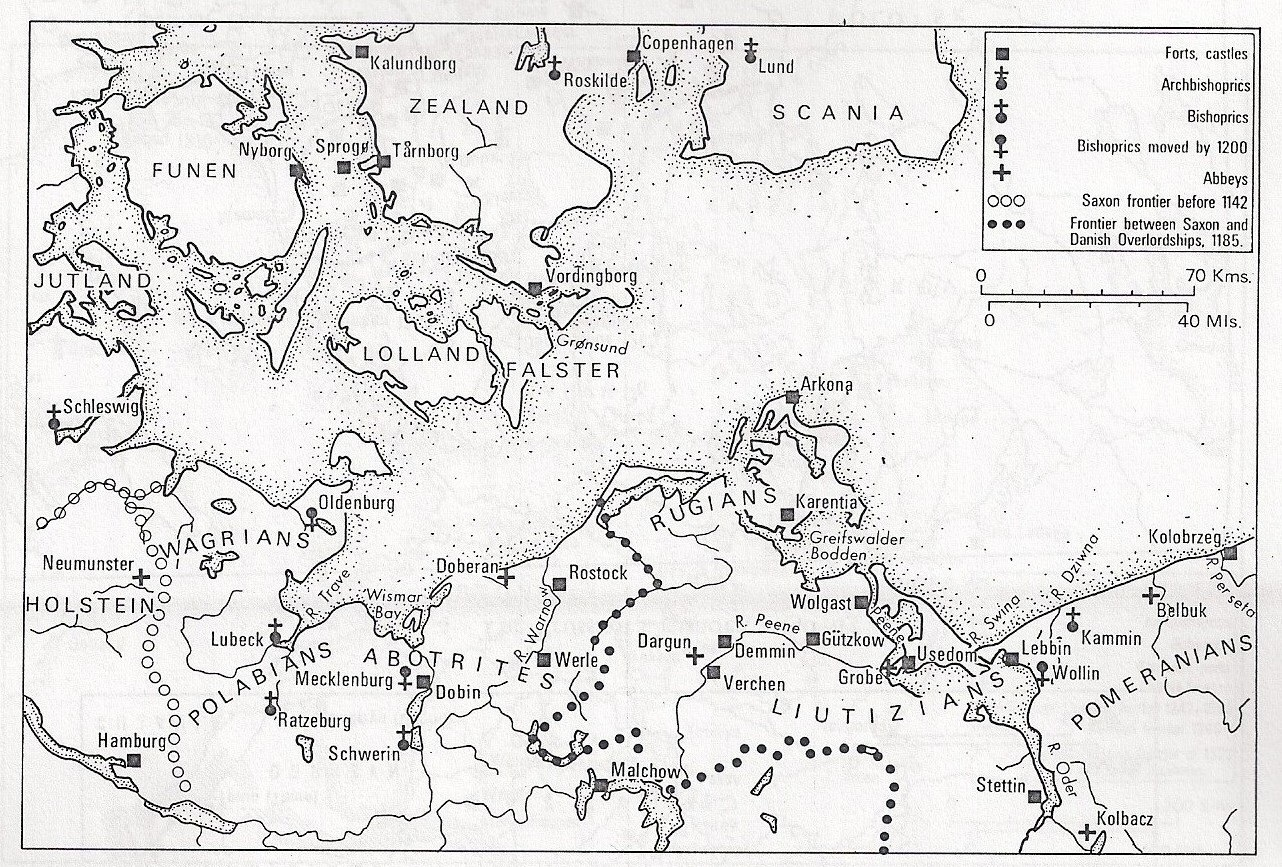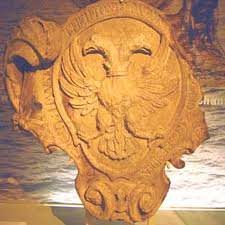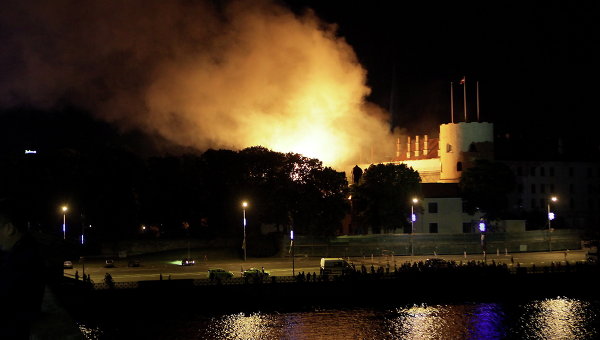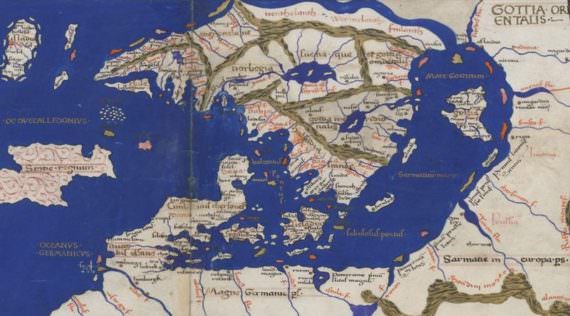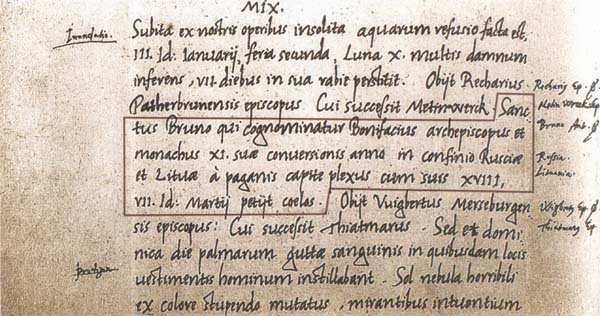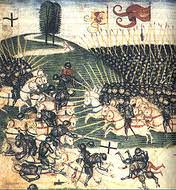Gesta Danorum and the Wendish Crusade
The Wendish Crusade from 1147 marks the beginning of ‘Holy Wars’ fought against the Balto-Slavic and Finno-Ugric populations from the Baltic See.
Why did Medieval Slave Traders go to Finland?
The demand for blonde girls and boys was so lucrative that slave traders would hunt for these people as far away as northern Finland, a recent study finds.
A Comparative Analysis Of Early Medieval North-West Slavonic And West Baltic Sacred Landscapes
The major aim of our paper is to present a comparative analysis of early medieval north-west Slavonic and Prussian objects and places which are interpreted in a sacral context.
The politico-religious landscape of medieval Karelia
In historical sources the Karelians appear in the 12th century although archaeological excavations suggest that the amalgamation of groups of Baltic Finns, centered on the Karelian Isthmus, that came together from east and west respectively to form them originated in the late Iron Age and early Viking Age.
The Richest Bachelor in Late Medieval Reval
When Hans Bouwer had his last will and testament composed on 9 April 1519, he bequeathed approximately 7000 Rigan marks to different institutions and individuals.
Finland, Tallinn and the Hanseatic League: Foreign Trade and the Orientation of Roads in Medieval Finland
What was the role of Finland in the trade of the Hanseatic League in the Middle Ages? Thisquestion has been widely discussed in Finnish history since 1882, when J.W. Ruuth publishedhis study on the relationship between Finland and the Hanse before 1435.
How to justify a crusade? The conquest of Livonia and new crusade rhetoric in the early thirteenth century
This article examines an apparently simple question: how to justify a crusade that did not aim at recovering the Holy Land.
Riga Castle in Latvia damaged by fire
Last week’s fire at Riga Castle has left the Latvian landmark with heavy damage, including the destruction of the roof and several rooms.
Novgorod the Great in Baltic Trade before 1300
The information on trade contacts between Novgorod and Scandinavian countries preserved in the works of Old Norse
The Dominican Convents in Medieval Norway
In the Middle Ages, the Kingdom of Norway was larger than it is today, where the former Norwegian districts of Jämtland and Bohus are now parts of Sweden. In 1380, the Norwegian throne was inherited by the Danish king, and for the rest of the Middle Ages, Danish monarchs ruled Norway, but even though the kings often made use of Danes in the administration, the Norwegian kingdom did in fact remain as an independent part of a so-called double monarchy.
Querimonia desolacionis terre sancte – The fall of Acre and the Holy Land in 1291 as an emotional element in the Teutonic Order tradition
Those Military Orders − the Templars, Hospitallers and Teutonic Knights, along with other Military Orders, had shed their blood across the Latin Kingdom and suffered many casualties in the final siege which took place in Acre between March and May 1291.
Fishing with Monks – Padise Abbey and the River Vantaanjoki from 1351 to 1429
How did the Cistercian Abbey of Padise in Estonia first come into possession of fishing rights for salmon in the River Vantaanjoki in Finland?
Environmental impact of the Baltic Crusades: deforestation, animal extinction, dogs no longer on the menu
A multidisciplinary project seeks to understand the environmental impact of the Baltic Crusades. Horses, for example, aided the Christians in battle, while the castles the Crusaders built decimated forests.
A Distant World: Russian Relations with Europe Before Peter the Great
Despite their isolation and poverty, the Slavic plowmen succeeded in settling this unforgiving region, expanding their numbers, and, most importantly, creating the beginnings of a trading network along the many rivers of the region—the western Dvina, the Volkhov, the northern Dvina, and the Dniepr and its tributaries.
The Amber Trail in early medieval Eastern Europe.
The standard method employed in characterization studies of amber, namely infrared spectrography, can discriminate roughly between Baltic amber and amber from other European sources…
Reflection of European Sarmatia in Early Cartography
While looking for the origins of the state of Lithuania, it is the study of old maps that helps solve a number of riddles, so far weighing on the history of our nation. Historical data, traced in maps and their images, unrestricted by any political, religious or pseudo- scientific taboos, allow us to cast a broad view on the dim and distant past of our state.
The Religious Orders of Knighthood in Medieval Scandinavia: Historical and Archaeological Approaches
Even if the various Orders of Knighthood reached Scandinavia somewhat later than most of the Christian civilization they soon became important religious institutions in Scandinavian societies in the same way as they already were in the rest of western Europe.
A defence installation of the developing Lithuanian state
This defence installation from the 12th and 13th centuries belongs to the most important fortified area of the newly developing Lithuanian state. It extended about 50 kilometres from east to west, and was built as a defence against the Polotsk-Pskov duchies and the Livonian Order.
On the Origin of the Name of Lithuania
Lithuania’s name was first mentioned as Lituae (the genitive form of the Latin word Litua) in the entry for March 9, 1009 AD in the Annals of Quedlinburg recording the martyrdom of St. Bruno.
The Turning Point in the Battle of Tannenberg (Grunwald/Žalgiris) in 1410
SVEN EKDAHL is Assistant Professor of History at Gothenburg University and Professor of Medieval History at the Polish-Scandinavian Research Institute in Copenhagen. He has published extensively on the history of the Teutonic Order in Prussia as well as treated Polish, Baltic, and Scandinavian themes.
The idea of Christian chivalry in the chronicles of the Teutonic Order
This thesis has as its subject matter the chronicles written by members of the Teutonic Order to describe and justify the crusades undertaken by the Order in Prussia and Lithuania in the thirteenth and fourteenth centuries.
Colonizing the Landscape: A Case Study of Medieval Livonia
There are several impulses which led me to the history of medieval landscape, and particularly that of Medieval Livonia. When discussing with Gerhard Jaritz the availability of medieval primary sources on the Eastern Baltic landscape, I was obliged to point out the extreme scarcity of medieval picture images, illuminated manuscripts or maps of Livonia.
Armed and expected: Traders and their Ways in Viking Times
The Baltic traders’ stimulation for trading with foreign countries was caused by the shortage of iron, the necessity to obtain good arms, salt, metals for bronze manufacturing, and silver.
Folk narratives and legends as sources of widespread idioms: Toward a Lexicon of Common Figurative Units
On the one hand, stories (particularly fables) have been de- rived from already existing proverbs, from antiquity up to early modern times. On the other hand, a story in its summarised form can live on in a proverb or an idiom, even if the knowledge of this story has been forgotten for a long time.
Maccabees on the Baltic: the Biblical apologia of the Teutonic Order
The Teutonic Order, came into being as the third and last of the great medieval crusading orders. The Order began its existence as a temporary hospital for German speaking crusaders during the siege of Acre in 1190.
